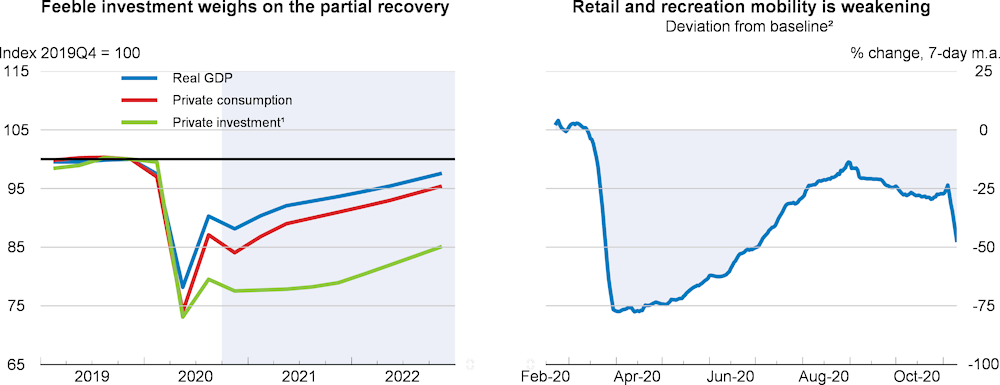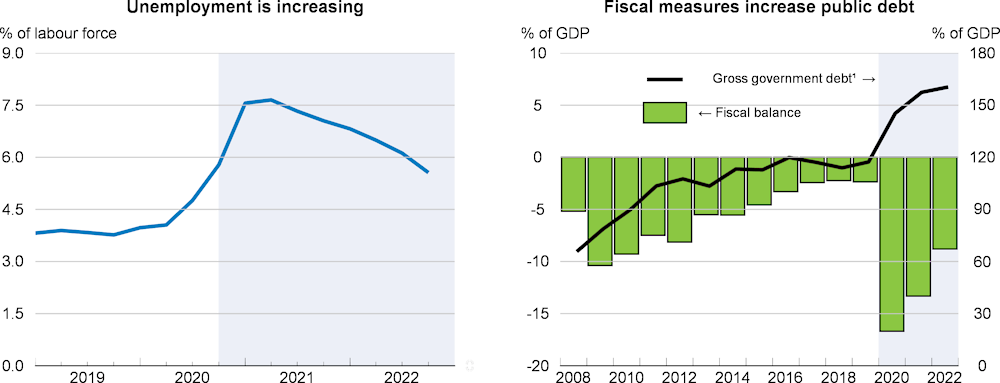GDP is set to contract again in the fourth quarter of 2020 as virus containment measures are implemented, and to fall by 11.2% in 2020 as a whole. Growth of 4.2% in 2021 and 4.1% in 2022 is projected to be driven by a rebound of consumption, while business investment will remain weak due to spare capacity and continued uncertainty. Until an effective vaccine is broadly deployed, risks of further outbreaks will dent confidence. Increased border costs will weigh on imports and exports from 2021 as the United Kingdom leaves the EU Single Market and is assumed to enter a new, less comprehensive free trade agreement with the European Union. Labour market withdrawals and unemployment will increase even though the Coronavirus Job Retention Scheme continues to support employment. Bankruptcies are set to rise, although extensions to crisis loan schemes are set to soften the increase.
Fiscal and monetary policies should stay supportive until the recovery firmly takes hold. Closely monitoring the situation, adapting and targeting support to hard-hit areas and sectors, while allowing structural change to take place are key challenges going forward. Extending increased levels of cash support and training to the unemployed can help this restructuring. Reaching a free trade agreement with the EU is essential to limit disturbances to exporting and importing industries.



